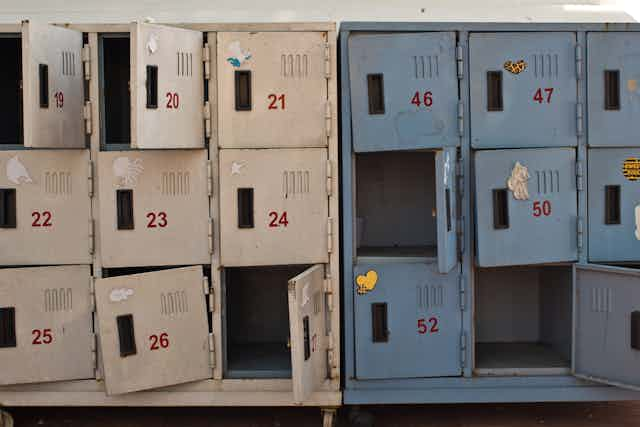One of the most vexing issues in education is the significant disadvantage of students in rural and remote areas - very remote students are only one third as likely as city students to meet international reading benchmarks in year 7.
This gap is not just due to socioeconomic status - Australia’s geography makes it particularly challenging to provide quality schooling for all children.
One of the biggest challenges is attracting and retaining a qualified workforce of teachers. Just 10% of the Australian population lives outside urban areas. This combination of sparse population and geography creates a range of difficulties for schools in isolated areas.
Since there are not usually enough qualified people in rural and remote communities to staff schools, education departments often focus on attracting outsiders to live and work there. But this is still hard to do.
Moving to rural or remote communities can entail a higher cost of living, limited availability of housing, isolation and remoteness – it can also be a culture shock.
To add to this challenge, it is already significantly more expensive to run schools in rural and remote communities because small populations of students mean schools have to contend with high relative fixed costs.
The per student cost of a principal or literacy specialist, for example, is much greater at a school with 25 children than one with hundreds of children.
Government incentives for teachers are not working
Governments in Australia have largely attempted to address the problem through funding and incentives.
The 2011 Gonski funding review recommended that more funding should be directed towards schools in remote areas. This recognised the inevitable extra cost of providing schooling in sparsely populated areas, where classes are by necessity very small and goods and services are expensive.
Funding is critical, but it is not sufficient if schools cannot attract qualified people to work there.
All states and the Northern Territory have policies in place offering financial and non-financial incentives to teach in rural and remote communities.
These range from extra pay to generous leave entitlements. For example, Western Australia offers teachers moving to remote locations additional allowances of up to $20,000 per year and half a year of long service leave after four years of teaching.
The problem is, such incentives have limited effectiveness because the disincentives for moving are so significant.
Research shows that the incentives also aren’t really working. Schools in rural and remote areas face persistent staff shortages, while city schools have a surplus of teachers.
What education can learn from the health sector
But evidence from the health sector suggests three policy areas that might work.
1. Recruiting a local workforce is effective
Nurses were more likely to stay in their job when they were drawn from rural and remote communities. The same is likely to be true in education.
The Australian Institute for Teaching and School Leadership recently addressed this by proposing that “equity groups” (which could potentially include remote students) could be assessed more flexibly for entry into teacher training.
Other indicators could be used if standard ones, like tertiary entrance scores, were insufficient. But this proposal has proven to be controversial because of a fear that it will lower standards.
2. Recruitment is improved when prospective workers are trained in rural areas
Rural health departments attached to medical schools give students opportunities to work in rural communities while they train.
Those students are subsequently more likely to practice in rural areas, regardless of their background.
Similarly, university schools of education could expand the opportunities on offer for students to experience working in rural and remote areas as part of their training.
3. Different scopes of practice and a more flexible workforce can improve provision
The health sector has made professional boundaries more flexible in some rural areas to ensure patients can access the services they need.
A trial in Lorne, Victoria, for example, allowed nurses to take X-rays instead of radiographers. Despite its demonstrated success, there has been substantial resistance within the medical community to the perceived risk of an encroachment on others’ “turf”.
Education providers might nevertheless consider whether there are areas of the curriculum or specialist skills that can be taught in rural and remote areas by staff who are not qualified as teachers but have the appropriate level of skill or experience.
Where to from here?
Such workforce challenges are not unique to Australia. Countries such as Canada, the US and Scotland grapple with providing a high quality workforce to isolated rural schools.
While no country has solved the problem, there are some creative possibilities.
For example, the Scottish government is implementing “community hubs” in rural areas to share staff across schools, early learning, vocational education and other services, meaning students have access to specialist staff that no single school in these areas would be able to provide alone.
In Australia, the above approaches have been tried, at best haphazardly, and without long-term commitment.
It’s time for Australian states and territories to assess what the evidence base is for the incentives that are already in place.
That money might be better spent on different recruitment policies that have already been shown to work.
It’s likely that some combination of existing incentives and new strategies will be required.
This will be more expensive than current practice, but if we want all children across the country to have access to quality schooling, it’s worth the investment.

